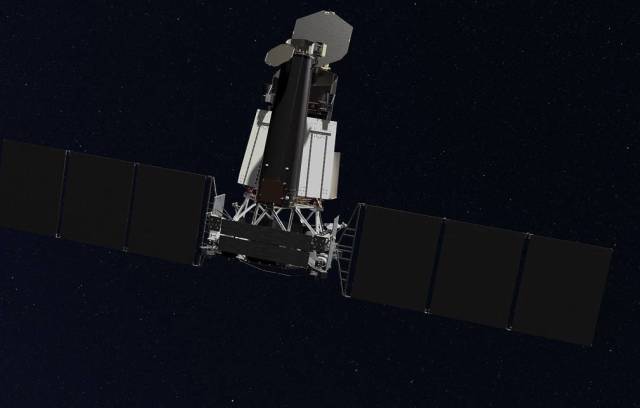Astronomers assume that a large star or some other object rotates around them
TASS, April 28. The eROSITA telescope, installed on board the Russian-German space observatory "Spektr-RG", has discovered two galaxies, supermassive black holes in the center of which recently awoke and began to produce periodic flashes of light and energy. This is reported by the press service of the Institute of Extraterrestrial Physics of the Max Planck Society (MPE).
It is believed that at the center of each galaxy is a supermassive black hole, which continuously absorbs incandescent gas and dust. Some of this material is thrown away from the black hole in the form of two beams of gas, the speed of which is close to the speed of light - relativistic jets, or jets. They emit a large amount of X-ray, gamma - ray and thermal radiation. This seriously affects the circulation of matter in the galaxy.
Some supermassive black holes, such as the one at the center of our Galaxy, may in some cases be in a kind of "hibernation". In this state, they almost do not absorb matter and do not produce jets.
Ricardo Arcodia of the Max Planck Institute for Extraterrestrial Physics and his colleagues have found out what happens during the awakening of supermassive black holes. In the images taken by the eROSITA telescope installed at the Spektr-RG observatory, they found two galaxies at once, QPE1 and QPE2, which probably contain awakened supermassive black holes. The fact is that the brightness of these galaxies in the X-ray range has changed dramatically between different eROSITA observation sessions.
Arcodius and his colleagues tracked each of these galaxies using the XMM-Newton X-ray telescope. It turned out that recently these galaxies began to flicker: at first they dimmed by several orders of magnitude, and then their brightness increased greatly. This occurred approximately every 2.5 and 18 hours.
The researchers believe that this periodicity may indicate that a very large star or some other object is orbiting around the supermassive black holes in these galaxies. From time to time, it comes very close to the event horizon. As a result, the black hole pulls some of its matter, which is why there are flashes of X-ray radiation.
However, scientists do not rule out that the cause of these outbreaks is the emerging accretion disk. This is what astronomers call a "doughnut" of incandescent gas and dust that usually surrounds active supermassive black holes. The chances of this, according to Arcodia and his colleagues, are relatively small, since before that black holes did not show any visible signs of activity.
Astronomers hope that with further observations of the QPE1 and QPE2 flickers, it will be possible to understand the mechanism of the awakening of supermassive black holes, as well as to find out what role these processes could play in the evolution of the Milky Way and other galaxies that went into "hibernation" relatively recently by the standards of the cosmos.

